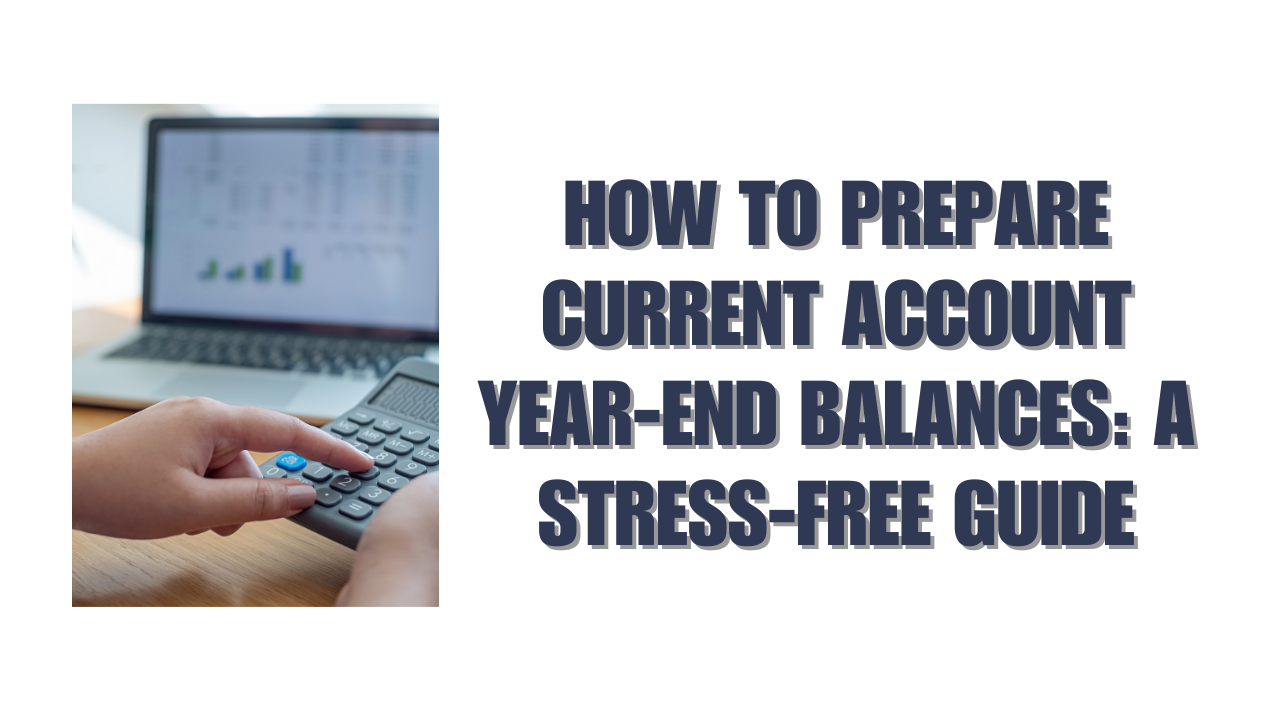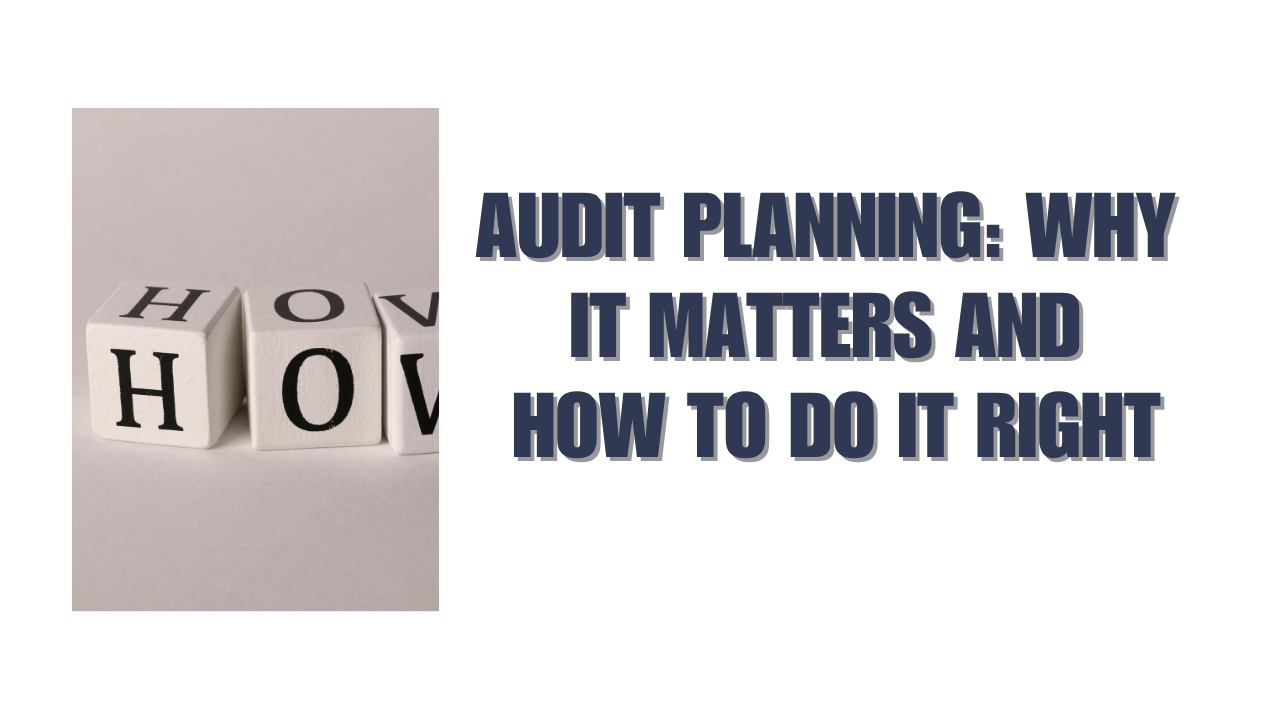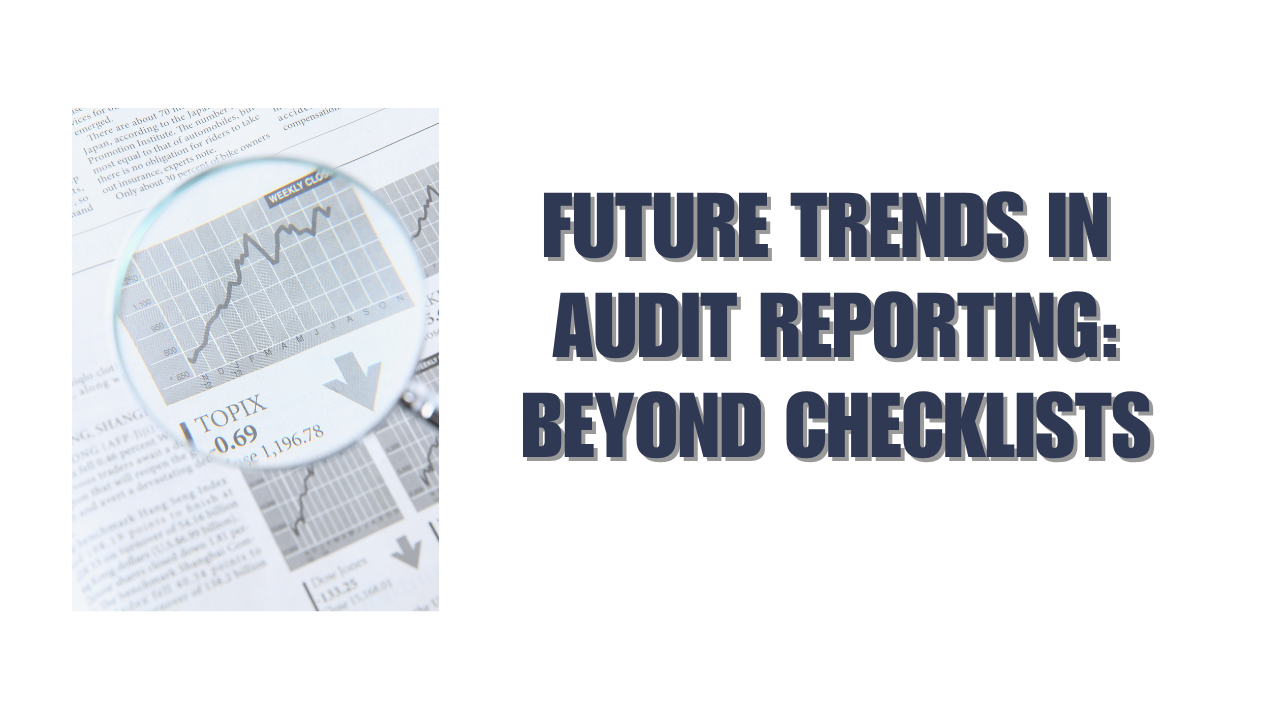Here’s a surprising fact: The average accounting team needs 25 days to complete an annual close.
Preparing current account year-end balances ranks among the most stressful tasks business owners and finance teams face. Year-end accounting is a vital checkpoint that measures your business’s financial health. Skipping or rushing through this process could lead to errors, compliance problems, and missed financial planning opportunities.
Good preparation makes managing current account year-end balances much easier. The real purpose isn’t creating extra work or adding stress. You need a complete picture of your company’s financial position, particularly with current account year-end balances IRD requirements.
We created this straightforward guide to help you direct the process quickly and accurately. Let us guide you through each step – from organizing financial records to reconciling balances and meeting IRD compliance. Your year-end accounting process will run smoother than ever before.
Understand What Current Account Year-End Balances Involve
Your business needs accurate year-end balances to keep proper financial records and stay compliant with tax regulations. Let’s look at what these balances mean and why they matter for your business.
What are current account year-end balances?
Current account year-end balances show the financial relationship between a business and its owners at the end of each accounting period. The IRD states these include “the current accounts of the partners for partnerships, the current accounts of shareholders for companies, and the beneficiaries’ current account balances for estates and trusts”. These accounts also include similar records if you have a self-employed status.
A current account works like a financial record book that tracks all money moving between the business and its owners. Here’s what these transactions might look at:
- Money owners put into the business
- Funds owners take from the business
- Loans between owners and the business
- Non-PAYE salary allocations
- Dividends credited but not paid out
The current account shows a credit when shareholders invest in the business, which adds to business funds. Taking money out creates a debit. These balances appear in the business financial statements at year-end.
Why they matter for compliance and reporting
Year-end balances play a vital role in tax compliance and business stability. They show a clear picture of the financial relationship between owners and their business, which helps with accurate reporting.
The IRD treats an overdrawn shareholder current account as a loan from the company to the shareholder. This happens when shareholders take out more than they put in. The IRD requires companies to charge interest on these loans at the prescribed rate, now at 8.41%. The company must pay Fringe Benefit Tax (FBT) if it doesn’t charge the right interest.
The IRD uses financial statement data to check “tax compliance risk, policy and strategic research”. You need accurate current account reporting to avoid extra attention from tax authorities.
Well-managed current accounts help ensure fair treatment between multiple shareholders by tracking everyone’s investments. Creditors can claim money from overdrawn current accounts if the company goes into liquidation.
IRD expectations and deadlines
Most New Zealand businesses use March 31 as their balance date—the last day of their accounting year. The accounting year starts April 1 and ends the following March 31.
The IRD has stepped up its focus on close company current accounts. They released over 40 pages explaining overdrawn current accounts. This shows how seriously they take these rules. Each business must figure out how these regulations apply to their situation.
You can fix overdrawn accounts at year-end through:
- Repayment: Putting money back into the company
- Declaring a shareholder salary: Your company needs to be profitable
- Declaring a dividend: You can credit this to the account instead of paying cash
Companies calculate dividends from overdrawn current accounts quarterly. These are usually treated as paid six months after the company’s year-end. Missing deadlines or handling current account balances incorrectly might lead to unexpected tax bills and penalties.
Gather and Organize All Financial Records
You need to understand what current account year-end balances mean before you start collecting and organizing your financial documents. A well-laid-out system for these records makes preparation easier and protects you if the IRD decides to audit.
Bank statements and transaction logs
Detailed bank records lay the groundwork for accurate current account year-end balances. You’ll need official bank statements that show your closing balances as of March 31st (or your designated year-end date). Your bank’s logo must appear on these PDF documents since CSV files or screenshots don’t meet official requirements.
Business owners who use cloud accounting software like Xero should reconcile all transactions up to their balance date. This process includes:
- Matching your bank reconciliation report with your final bank statement
- Fixing differences between accounting records and actual bank balances
- Making sure closing balances in your accounting software match your statements
Cloud accounting makes this easier, all the same, you must keep copies of your year-end bank statements. These documents verify all your business accounts – savings, operations, credit cards, and loans.
Invoices, receipts, and payment confirmations
Accurate current account reporting needs thorough documentation of every financial transaction. Throughout the year, you should collect:
- Sales invoices and receipts
- Expense records and bills
- Payroll documentation
- GST returns and tax invoices
Some documents need extra attention. Keep invoices for significant expenses that exceed NZD 1,705.61, along with legal costs and insurance payment records. More than that, flag any transactions you weren’t sure how to categorize with supporting documentation.
Digital records give you clear advantages. They make it easy to find, analyze and share documents with your accountant. You could upload these files directly to your accounting software or create a well-organized digital filing system by year, account type, and category.
Loan and intercompany account details
Loan documentation plays a vital role in current account year-end balances, especially when you have shareholder and intercompany loans. Each loan requires:
- Complete loan statements showing interest and principal amounts for the financial year
- Documents that outline loan terms, interest rates and repayment schedules
- Records of new loans, hire purchases, or investments from the year
Intercompany loans need detailed records of terms and conditions that match “arm’s length” standards (like in terms from external lenders). Remember that intercompany balances in foreign currencies create special cases – currency changes lead to foreign exchange gains or losses that need proper recording.
Regular checks of these intercompany accounts help you spot and fix problems quickly. Your loan records will accurately show their terms and status. This watchfulness throughout the year makes your year-end work simpler and reduces compliance risks.
Reconcile Your Current Account Balances
Your current account year-end balances depend on proper resolution of accounts. This process will give a clear match between your financial records and external documentation. You need to spot any irregularities before they become problems. Let’s get into how to handle this vital task.
Match transactions with supporting documents
Bank reconciliation serves as the foundation of accurate financial reporting. You need to compare your internal financial records with external documentation like bank statements. This helps verify that you’ve recorded every transaction properly.
To match transactions the right way:
- Start with your most recent bank statement and compare each entry with your accounting records
- Make sure amounts, dates, and descriptions match in both records
- Look for deposits in your records that show up as credits on your bank statement
- Make sure payments in your records show up as debits on your bank statement
- Mark each verified transaction as “reconciled” in your system
This step-by-step approach helps you find unrecorded transactions like bank fees or interest payments you might miss otherwise. Of course, when you keep this practice up throughout the year, you’ll have less work during year-end preparation.
Identify and resolve discrepancies
Even with careful bookkeeping, you’ll often find differences during reconciliation. These happen because of:
- Data entry errors (transposed numbers, incorrect dates)
- Timing differences (checks not yet cleared, pending deposits)
- Missing transactions (unrecorded expenses or income)
- Duplicate entries (transactions recorded twice)
You should break down each difference by looking at source documents like invoices, receipts, and payment confirmations. To name just one example, when a transaction shows up in your bank statement but not in your books, figure out if someone forgot to record it or if there’s another reason.
Small differences (a few cents) might go into a “reconciliation discrepancy” account. But larger amounts need a detailed review to keep your financial reporting accurate.
Use accounting software for accuracy
Modern accounting software makes the reconciliation process much easier through automation. Programs like Xero connect to your bank directly. They import transactions and suggest potential matches, which saves you time.
These systems usually offer:
- Automated transaction matching based on your rules
- Flags for potential differences you should review
- Visual indicators showing your progress
- Detailed reports for audits
Cloud-based solutions also show your financial position with up-to-the-minute data analysis. This lets you spot and fix issues right away instead of rushing at year-end.
Monthly reconciliation works better than doing it yearly. Small issues won’t grow into big problems. Your current account year-end balances will be more accurate, and you’ll meet IRD requirements better. Yes, it is worth spending time on regular reconciliation. You’ll face less stress during tax season and feel more confident about your financial reporting.
Review for IRD Compliance and Tax Implications
Tax compliance management plays a crucial role in handling current account year-end balances. The IRD has increased its focus on shareholder current accounts, with over 40 pages of published information about overdrawn balances. Let’s get into the most important compliance areas you just need to focus on.
Check for shareholder current account overdrawn balances
Shareholders create an overdrawn current account when they take out more money than what they’ve put into the company. This creates potential risks that you can’t ignore. We noticed the IRD treats this as a loan from the company to the shareholder.
My first steps during year-end reviews of overdrawn accounts include checking these solutions:
- Direct repayment of the overdrawn amount
- Declaration of shareholder salary (requires company profitability)
- Declaration of dividends from retained earnings
These solutions must work within proper guidelines. Companies must stay solvent before and after declaring dividends or shareholder salaries.
Ensure interest calculations are correct
The IRD applies either dividend tax or Fringe Benefit Tax (FBT) if interest isn’t charged at their prescribed rate (currently 8.41%) on overdrawn balances. Your choice between these depends on whether the shareholder works as an employee too.
Start by calculating interest with the daily loan balance formula. The dividend or fringe benefit usually equals the gap between interest at the prescribed rate and actual interest charged. Charging interest at the exact prescribed rate removes these tax obligations.
Companies should report interest income from shareholder accounts. Note that shareholders usually can’t claim deductions for this interest unless they used the borrowed money specifically to generate income.
Prepare for IRD audit or review
The IRD actively checks financial records to verify tax compliance, including shareholder current accounts. I make sure all transactions between shareholders and the company have really good documentation before any review.
An IRD audit might look at basic GST registration or take a complete look at business and personal records. IRD officers often review both business and private activities during this process.
Making a voluntary disclosure, even after getting an audit notice, can cut potential penalties by 40%. Businesses must keep their complete financial records accessible for seven years.
Regular reviews before year-end help spot and fix issues before IRD interest kicks in. Double-check that all related party transactions appear in records properly. Make sure travel expenses relate to business and all accounts receivable/payable balances match up. This proactive strategy reduces compliance risks and helps your current account year-end balances meet regulatory requirements.
Conduct a Pre-Year-End Review and Plan Ahead
Pre-year-end reviews substantially reduce stress when you close your current account books. Smart planning helps you keep your financial records accurate.
Run a trial balance and review entries
Your company’s trial balance provides a vital compilation of debits and credits that you can pull anytime. This internal audit mechanism verifies that your general ledger transactions are accurate by matching the total of each column (debit and credit). Your liabilities must appear on the credit side, while assets show on the debit side.
Adjust entries before closing
Your focus should be on fixing any discrepancies you find in the trial balance. Year-end procedures require adjustments to align your company file with your accountant’s final records. You should match your GST returns with the GST account in financial statements. Inland Revenue often requests this information during audits. On top of that, you need to check fixed assets and write off items you no longer use.
Set up a checklist for next year
A well-laid-out checklist will make your future year-end process smoother. Include monthly bank reconciliations, regular GST checks, and scheduled reviews of shareholder accounts. These tasks might seem tedious now, but you’ll thank yourself later for being prepared.
Conclusion
Preparing current account year-end balances just needs attention to detail, and the process doesn’t have to overwhelm you. This piece explores the critical aspects of this vital financial task. Without doubt, grasping these balances are the foundations of proper financial management, especially when you have the IRD’s increased scrutiny of shareholder accounts.
Your greatest ally in year-end processes is organization. Collecting and categorizing financial records throughout the year will save countless hours instead of scrambling for documentation at the last minute. This approach substantially reduces stress. Regular reconciliation stops small discrepancies from becoming major headaches during tax season.
IRD compliance stays paramount, especially with overdrawn shareholder accounts. Mishandling these balances can lead to unexpected tax liabilities, penalties, and unwanted scrutiny from tax authorities. Checking interest calculations and ensuring proper documentation should become part of your standard financial routine.
Pre-year-end reviews act as your financial safety net. Running trial balances, adjusting entries, and fixing discrepancies before your official year-end date gives you time to correct issues without pressure.
This proactive approach turns what many call a dreaded annual task into something manageable.
Note that becoming skilled at current account year-end balances needs consistency above everything else. Each year gets easier as you refine your processes and keep better records throughout the fiscal period. The time invested in proper financial management rewards you with better business insights, smoother compliance, and greater peace of mind.
This stress-free guide will help direct your next year-end with confidence and precision. Your financial health deserves this attention—it’s the backbone of your business success.
FAQs
Q1. What are current account year-end balances and why are they important?
Current account year-end balances represent the financial relationship between a business and its owners at the end of the accounting period. They are crucial for tax compliance, accurate reporting, and maintaining transparency in business finances. These balances help ensure fairness between shareholders and are closely scrutinized by tax authorities.
Q2. How should I prepare for calculating current account year-end balances?
Start by gathering all financial records, including bank statements, transaction logs, invoices, receipts, and loan details. Organize these documents systematically, preferably digitally. Regularly reconcile your accounts throughout the year to minimize discrepancies and make the year-end process smoother.
Q3. What are the consequences of having an overdrawn shareholder current account?
An overdrawn shareholder current account, where more money has been withdrawn than contributed, is treated as a loan from the company to the shareholder.
This situation requires charging interest at the prescribed rate (currently 8.41%). Failure to do so can result in additional tax liabilities, such as Fringe Benefit Tax or dividend tax.
Q4. How can I ensure compliance with IRD requirements for current account balances?
Regularly review shareholder accounts for overdrawn balances, ensure correct interest calculations, and maintain thorough documentation of all transactions. Conduct pre-year-end reviews to identify and address any issues before they trigger IRD interest. Stay informed about IRD guidelines and deadlines for reporting and resolving overdrawn accounts.
Q5. What steps can I take to make the year-end process less stressful?
Implement a year-round approach to financial management. Use accounting software for accuracy and efficiency, perform monthly reconciliations, and maintain organized digital records. Create a checklist for year-end procedures and conduct a pre-year-end review to address discrepancies early. Regular attention to these tasks throughout the year will significantly reduce stress during the actual year-end process.






